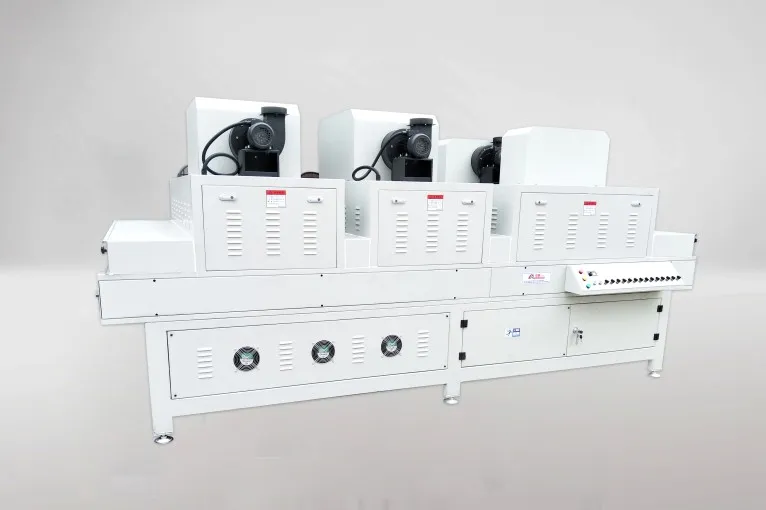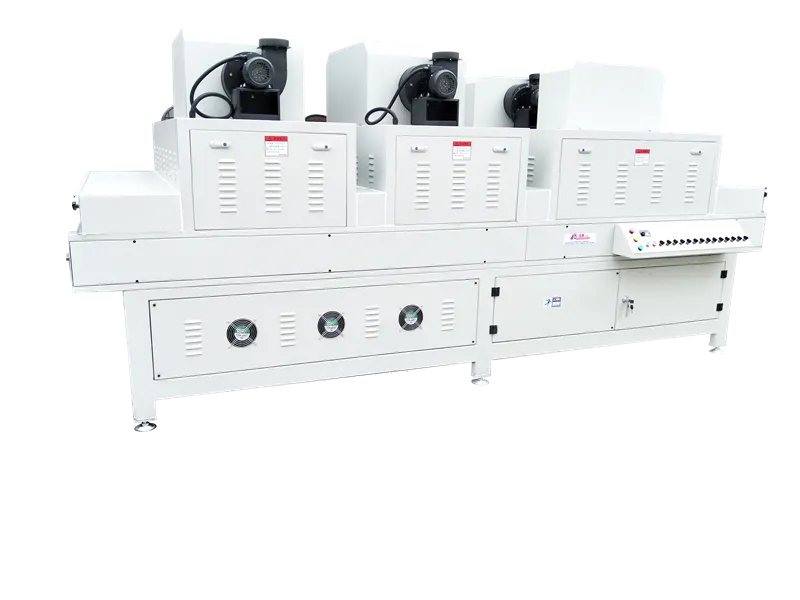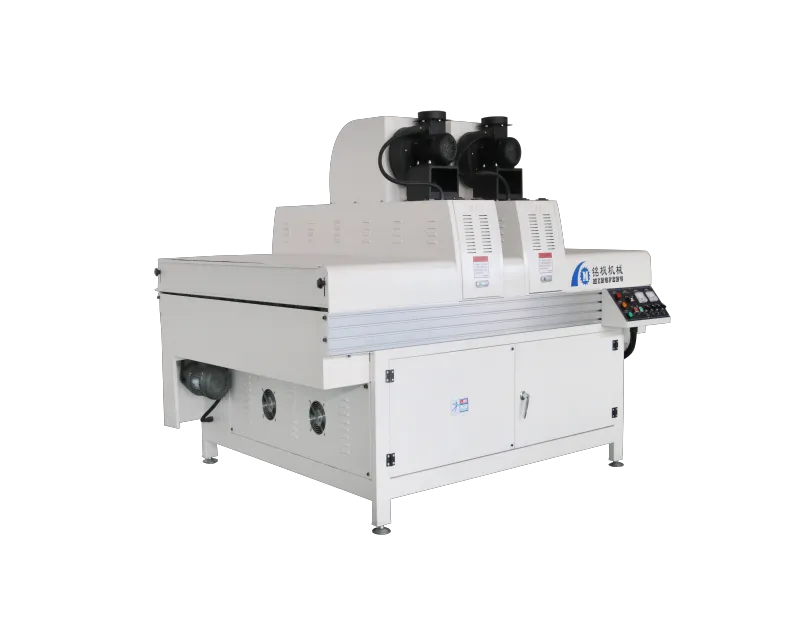It can be transparent, but it may not—depending on multiple factors, including the UV paint's formulation (transparent or not), the coating process, curing conditions, the wood substrate, and post-treatment.
This article systematically explains why transparency or opacity occurs, the factors that determine transparency, how to ensure transparency, and how to detect and troubleshoot common issues that affect transparency. It also provides professional and practical conclusions and recommendations.
UV paint: What does "transparency" mean?
In the paint and coatings industry, several optical terms are commonly used to describe whether a surface appears transparent:
• Transmittance: The percentage (%) of light that passes through the coating. High transmittance means the coating allows most visible light to pass through, making it appear more transparent.
• Haze: Indicates the degree to which transmitted light is scattered. High haze can blur an image (lack of clarity).
• Gloss: The ability of a surface to reflect specular light, which affects visual clarity.
• Clarity (DOI): The ability of a surface to retain detail in both reflection and transmission, which is related to surface smoothness and microtexture.
Therefore, when users ask, "Is UV paint transparent after drying?" the question actually depends on: whether the paint itself is a highly transparent formula, whether there are particles/pigments/bubbles within the film, and whether there is scattering or discoloration between the surface and interior of the coating.

What are the key factors determining the transparency of a UV coating?
1. The coating's formulation (primary factor)
• Whether it is a transparent formulation: There are clearcoat-type UV paints on the market (colorless, no, or low-pigment content), as well as topcoats containing pigments or fillers (pigmented or translucent effects). Only transparent formulations can theoretically achieve high light transmittance.
• Fillers and pigments: Titanium dioxide, mica, carbon black, etc., can significantly reduce light transmittance and increase haze. Certain functional fillers (such as anti-scratch agents and pearlescent powders) can cause scattering or shimmer.
• Monomer/oligomer refractive index matching: Formulas with high transparency typically use components with a refractive index that matches the wood surface or resin to reduce interfacial scattering.
• Photoinitiators and additives: Some photoinitiators or additives can leave a tint (slight yellowing) after curing, which is particularly noticeable under short-wave mercury lamp (shortwave) illumination or high temperatures.
2. Coating Thickness and Uniformity
• Thin films (a few microns to tens of microns) are more likely to maintain high transparency; thick films containing tiny impurities or bubbles can increase scattering and haze.
• Uneven film thickness leads to localized optical variations, affecting clarity.
3. Coating Process (Painting Method)
• Spraying: Improper equipment parameters (poor atomization, uneven spray distance, excessively high spray pressure) can result in tiny particles, orange peel, or pinholes, affecting transparency.
• Roller coating/knife coating/leveling: Effective for flat surfaces, producing smoother films with lower haze, promoting transparency.
• Multi-layer coating: Applying thin layers and curing can reduce internal bubbles and skinning.
4. Curing Conditions: The Role of Wood UV Drying Machines
• Irradiance and Dose (Energy Density): The correct total energy (J/cm²) ensures sufficient crosslinking of the coating, locking in a transparent network. Insufficient energy can result in a sticky surface or incomplete polymerization. Excessive or uneven energy can cause yellowing or surface tension changes, leading to defects.
• Spectral Matching (LED vs. Mercury Lamp): LED-UV has a narrow wavelength, low heat generation, and generally results in less yellowing, making it suitable for formulations seeking high transparency (provided the formulations are compatible). Medium-pressure mercury lamps emit a broad spectrum, and if the coating or substrate contains components that absorb this wavelength, discoloration or slight yellowing may occur.
• Oxygen Inhibition: Oxygen in air inhibits free radical polymerization, resulting in a sticky surface or the formation of an incompletely crosslinked thin layer, which may appear dull or slightly tacky. This can be alleviated by applying a nitrogen blanket or adjusting the formulation/process.
5. Substrate (Wood)
• Wood color, grain, and oil content: Dark or pigmented wood can affect visual perception; some woods (such as cherry and teak) contain migrating substances (tannins and oils) that can cause yellowing or bleeding, affecting transparency.
• Surface flatness and moisture content: Uneven sanding or unstable moisture content can lead to minor surface imperfections or blistering after curing.
6. Post-curing/Post-treatment
• High-temperature post-curing or heat aging may cause yellowing; proper temperature control and selection of low-yellowing formulations can prevent this.
• Surface polishing/mirror finishing can enhance the subjective visual effect of "transparency" (higher gloss and clarity).

The Specific Impact of a Wood UV Drying Machine on Transparency
When using a wood UV drying machine for in-line curing, the following equipment parameters directly impact the transparency achieved:
• Spectrum (Wavelength): LED wavelengths are concentrated around 365/385/395/405 nm. If the coating's photoinitiator absorbs well in this wavelength range, LED curing allows for complete curing with lower heat loads, minimizing yellowing and oxidation. Mercury lamps emit short-wavelength UVC radiation, which may cause discoloration of certain additives or the substrate.
• Irradiance (mW/cm²) and Dose (J/cm²): The wood UV drying machine should provide stable irradiance and ensure uniformity in both the horizontal and vertical directions. The measured irradiance is used to calculate the conveyor speed to ensure that each board receives sufficient dose for crosslinking.
• Uniformity: The arrangement of the light strips, the design of the reflector, and the width of the conveyor belt determine the uniformity of the irradiation. Uneven irradiance can result in some areas being transparent and others being dark.
• Thermal Management: The high temperature of the mercury lamp may induce oil release from the wood or migration of substrate substances, causing yellowing or hazing of the film. Wood UV drying machines require a good cooling and exhaust system to control workpiece temperature.
In summary: Proper equipment selection (LED or appropriate mercury lamp), matching the spectrum with the coating, uniform and stable energy output, and precise speed control are key to ensuring "transparency."
How can you ensure that wood UV coatings remain transparent after drying?
The following provides a practical set of steps to improve transparency and clarity on the production line:
Step 1: Select the Correct Coating Formulation
• Choose a UV varnish clearly labeled "transparent," "colorless," or "low-yellowing"; confirm whether it is LED-UV compatible.
• Choose a low-yellowing photoinitiator or include an anti-yellowing additive in the formulation (pay attention to compatibility with the curing reaction).
Step 2: Substrate Pretreatment
• Control moisture content, thoroughly sand to an appropriate grit, and remove dust; if necessary, use a sealer to seal pores.
• For highly oiled or dark-colored wood, use an isolating primer or sealer to prevent migration of wood components and affect the surface.
Step 3: Coating Process Optimization
• For flat door panels, prioritize roller or knife coating to achieve a low-haze surface; use automated spraying to fill complex corners.
• Maintain film thickness within the manufacturer's recommended range to avoid over-coating in one application.
Step 4: Adjust the Wood UV Drying Machine
• Use a radiometer to measure the actual light intensity and set the conveyor speed according to the recommended coating dosage; ensure uniform light intensity with no blind spots.
• If oxygen inhibition is significant, install a nitrogen hood or use inert gas replacement in the curing tunnel; or perform a second short exposure after the topcoat to ensure surface quality.
• When using LED-UV, ensure wavelength matching; when using mercury lamps, control temperature and exhaust to avoid ozone issues.
Step 5: Post-curing Inspection and Necessary Sanding
• After curing, verify with MEK wipes, hardness tests, gloss, and haze tests. If fine particles or orange peel are present, micro-sanding and polishing can be used to improve clarity (depending on the coating thickness and performance).

"Looks Transparent but Not Ideal" Problems and Their Causes and Solutions
Problem A: The surface appears "foggy" or "hazy"
• Cause: High haze (extensive scattering), typically caused by fillers, bubbles, or microparticles; or microphase separation within the coating film.
• Solution: Verify that the paint is truly transparent, optimize filtering, coating, and curing parameters to reduce spray particles; use roller coating or leveling to improve smoothness.
Problem B: Yellowing or color shift on the surface
• Cause: Decomposition of photoinitiators or additives after exposure to high-energy, short-wavelength irradiation, or high wood tannin content; the high temperature of mercury lamps can also promote thermal oxidation.
• Solution: Use a low-yellowing formulation or LED light source, employ a barrier primer, and control temperature and irradiation dose.
Problem C: Tiny "white spots/pinholes" on the surface
• Cause: Outgassing of the wood, incomplete evaporation of water or solvents, or insufficient degassing due to excessively fast conveyor speeds.
• Solution: Control the wood moisture content, reduce the initial irradiation intensity, or perform curing in stages to ensure adequate leveling and degassing of the coating.
How to Test "Transparency"? (Instruments and Criteria)
• Total Transmittance/Light Transmittance Measurement (UV-Vis Spectrophotometer or Transmittance Meter): Measure the percentage of light transmittance for quantitative comparison.
• Haze Meter: Measure haze values according to ASTM D1003; lower numbers indicate clarity.
• Gloss Meter: Measure specular reflectivity, indirectly reflecting surface smoothness and clarity.
• DOI/RA (Distinctness of Image/Reflected Image): Indicators of reflected image clarity, commonly used in automotive and high-end furniture evaluations.
• Visual Inspection and Photographic Comparison: Observe wood grain clarity and color difference under standard light sources for subjective evaluation.
"Wood UV Drying Machine: Is UV paint transparent after drying?"
It can be completely transparent, or it can appear opaque or hazy. Achieving high transparency requires:
(1) Selecting a transparent and low-yellowing UV formula that matches the light source (the wavelength of the wood UV drying machine);
(2) Controlling the substrate, polishing, and sealing;
(3) Using a suitable coating process (roller coating/spraying/leveling) and controlling the film thickness;
(4) Using a wood UV drying machine to provide uniform and appropriate energy density and control temperature and oxygen suppression;
(5) Improving the testing and correction process.
Each of the above steps has professional parameters and quantifiable testing methods - if these links are done well, the UV coating can achieve high light transmittance, low haze, high gloss, and excellent clarity after drying.
How does XMF Machinery ensure product quality?
XMF Machinery employs strict quality control processes at every stage of production. Our factory uses advanced technology and skilled technicians to manufacture durable and efficient coating and printing machines. We guarantee high-quality products at reasonable prices, supported by positive customer feedback and long-term cooperation with paint coating enterprises worldwide.
